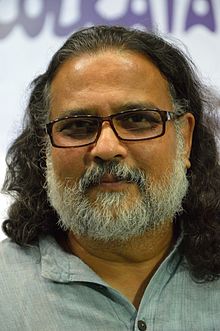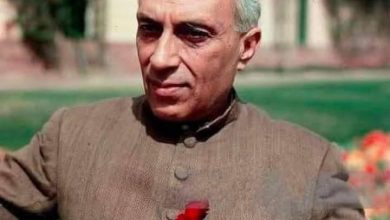Sabarmati Ashram : Oblitarating Bapu, Erasing His Legacy
Redeveloping Sabarmati Ashram

For the past two years, frequent reports in the press suggest that Government of India through Government of Gujarat is going to redevelop Sabarmati Ashram and build a ‘Grand World Class’ monument there. There are many very loud rumours but very scant official information; it seems officially they prefer secrecy. During this time, when I have visited Sabarmati Ashram, I have been confronted by many of the longterm residents of the Ashram precinct. These are descendents of those who lived in the Ashram since Ba and Bapu first established it in 1917 – families who have continued to live there for over a hundred years.
When Bapu left on the Dandi Kooch on 12th March 1930, he vowed not to return to the Sabarmati Ashram till India won freedom and in 1933 he finally decided to disband it.
Please also watch this
In the wake of the Dandi Kooch and the subsequent nation wide Namak Satyagraha, the colonial regime unleashed a brutal reprisal to crush the nonviolent revolt. Farmers and satyagrahis bore the brunt of the tyrranical oppression. Their properties were seized by the state along with all their possesions and they were rendered destitute.
This anguished Bapu and he decided that he would surrender Sabarmati Ashram to the colonial power as a mark of protest against the brutal methods employed by it.
Since he was the instigator of the regiem’s ‘troubles’, he believed he must be punished. When Bapu’s associates were informed about Bapu’s decision there was much consternation and a lot of voices were raised against this. Eventually Thakker Bappa, one of Bapu’s very senior associates, convinced Bapu not to take such a drastic step.
Bapu relented, and handed over the Ashram to the Harijan Sevak Sangh. He instructed them to use the Ashram for the upliftment and benefit of Harijans in perpetuity. As he bid farewell to his home for thirteen years, he instructed Maganlal Gandhi, who was managing the Ashram to ensure that all those who were occupying Ashram properties were allowed to do so, as long as they lived according to the ideals of the Ashram, which were practiced when Ba and Bapu lived in the Ashram. Ever since, families and descendents of these residents have continued to live in these tenements, some for over a hundred years continuously. Now they are faced with the possibility of being evicted, uprooted, displaced.
So for the past two years whenever I visit the Ashram the current occupents of these properties, who feel threatened by the Government’s proposal, meet me to plead with me to safeguard their Ashram and of course their residences. I have grown up knowing many of them as belonging to the extended Ashram family. The thought of them being displaced is disturbing, naturally they are anxious.
Various reports in the press and media suggest that the Government is in a very advance stage of planning the ‘takeover’ and revamp of the Ashram. Stories have circulated about the architect being appointed and detailed plans of the redesign of the Ashram keep appearing in the media and are in circulation, many are conflicting.
One says that the Government possesses a photograph of the Ashram as it was in 1947 when India became independent and it intends to restor the Ashram to that state. This very sinesterly implies that even the accalimed and awardwinning Sanghrahalaya, designed and built by the eminent architect Shri Charles Correa will also be removed. Why? Because it was commissioned and inagurated by the then P.M. Pandit Jawaharlal Nehru? Another claims that a ‘grand’, ‘world class’ tourist attraction is planned. Bapu in his bequest clearly stated that the Sabarmati Ashram has to work for the upliftment and benefit of Harijans, Dalits. How will the proposed revamp achieve this? There are Harijan families living in the Ashram presinct, they too face eviction because of the ‘proposed’ revamp, how does that benefit them? The colonial government forcefully seized homes of farmers and Satyagrahis causing much distress to Bapu. Why is an Indian government acting like the authoritarian and tyrrinical Colonial administration?
All this and much more about the plans and intentions of the Government are unofficially known, but nothing has been officialy said. One thing is certain that it is a ‘P. M.’s Project’ and like all the other ‘P.M.’s Projects’ it is going to be steam rolled through, and shoved down our throats. His men in Gujarat are driving the buldozer.
When the present residents meet me they give me many details, but when I talk to the trustees of the several trusts associated with the Sabarmati Ashram, who are custodians and caretakers of the Ashram, they keep reitorating that they have no ‘official’ information or intimation from the Government, even now. The whole thing smells bad, rotten and of hidden and ill intentions. Otherwise why this shroud of secrecy? What is the government hiding?
In the last six months the Government has gone into overdrive, officials have been appointed and assigned to ramrod the project, known P.M.’s men. Committees have been appointed, only some convenient ‘Gandhians’ have been included, these too merely in an advisory capacity. Nonstate players have started acting. Tenants and residents have been approached, some say threatened to accept compensation and move out amicably or face being forcibly ejected. But yet the trustees claim they have no official intimation.
This is the background of what is happening to the Sabarmati Ashram. Soon it may be irrevokably lost!
Bapu said, ‘My life is my message’, that is his legacy. In today’s times it is very difficult to imagine the simplicity, frugality and openness of that man. His was a truly transperant life, there was no public man and a hidden, private person. In present times it is difficult to imagine, let alone believe that such a one as him ever lived. Sabarmati Ashram and Sevagram Ashram at Wardha are the visual symbols of the man’s simplicity, his frugal existence, his transperancy. On visits to Sabarmati Ashram, at Hridaykunj, I have often heard children ask their parents, “Such a great man, lived in such a small and simple hut? He sat and worked in such a open place.” It is when they see Hridaykunj at Sabarmati Ashram and Bapu Kutir at Sevagram that Bapu becomes believable to the present generation. When these are lost, Bapu will become a mythology. Mythology is so convenient to live with and tweak as required.
Sabarmati Ashram today enshrines the ideals of Bapu’s life and legacy. It is sparce, it is simple and it is starkly frugal, those who understand Bapu’s ideals and life know that this is his true legacy and the Sabarmati Ashram portrays them truly, makes them beliveable. It is only those who have never understood Bapu and who truly are not bothered about understanding him, let alone emulating him, who feel that it needs to be made ‘grand’. Their intention is not to preserve or conserve the Ashram or make it more attractive; their intention is to oblitarate it and the legacy it enshrines. To convert a shrine of our independence movement and the life of the couple who lived there into a tourist plaza, an amusement park. That is their real intention. The question is not about saving Sabarmati Ashram, it is about saving the legacy of Bapu and Ba.
Tushar Arun Gandhi (born 17 January 1960) is the son of journalist Arun Manilal Gandhi, grandson of Manilal Gandhi and great-grandson of Mahatma Gandhi.[3] In March 2005, he led the 75th anniversary re-enactment of the Dandi March.[4]From 2007 to 2012, he was the Goodwill Ambassador of the CISRI-ISP Intergovernmental Institution for the use of Micro-algae Spirulina Against Malnutrition.





